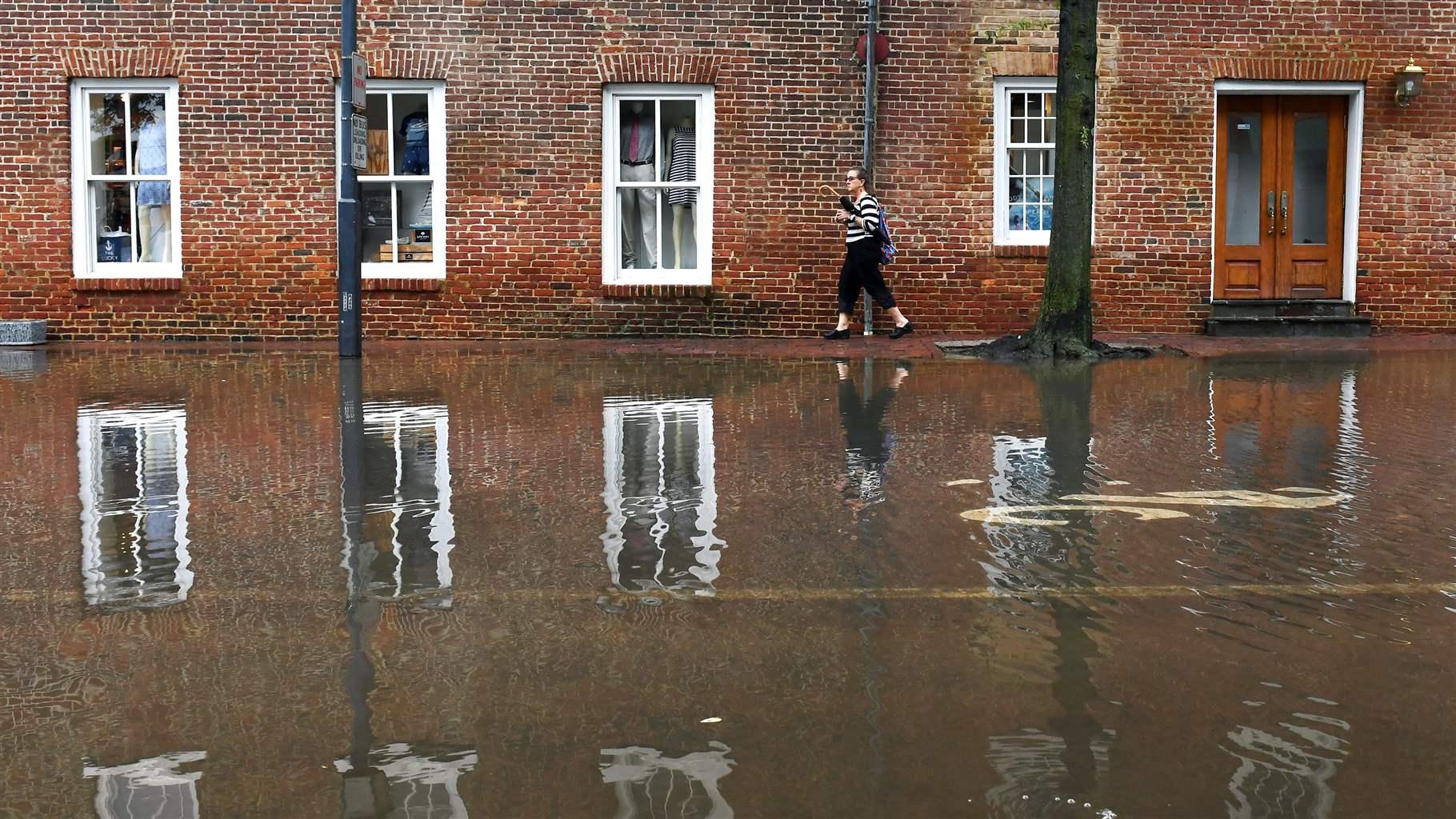Virginia’s New Flood-Preparedness Program Is a Statewide Win

Flooding is Virginia’s most common and costly natural disaster, affecting every corner of the state. Already in 2020, communities from Southside to the Southwest and Hampton Roads to Roanoke have grappled with floods, which in many cases disrupt lives, force evacuations, and damage property. Even before the COVID-19 pandemic, many communities couldn’t afford to start flood mitigation projects that make them less vulnerable to severe storms. And now some are being forced to delay or halt efforts because of the pandemic’s strain on municipal budgets and emergency systems. That’s why it’s great news that a new law creating a statewide revolving loan program to fund flood mitigation projects went into effect on July 1.
Crafted this past legislative session by the General Assembly and Governor Ralph Northam, the law creates the Virginia Community Flood Preparedness Fund, which will provide flood-prone communities with low-interest loans and grants to carry out projects that help reduce flood damage and the costs associated with recovery. The research shows that Virginians back this kind of investment. A 2019 poll from The Pew Charitable Trusts found that 84% of registered voters in the state—across party lines—favored a state-run fund to help owners of homes and businesses invest in mitigation measures to reduce flood risk in their communities.
The fund’s money will come from the state’s participation in the Regional Greenhouse Gas Initiative (RGGI), which places a fee on carbon pollution by utilities above a certain level but allows them to purchase or trade allowances to offset their emissions. The state Department of Environmental Quality expects RGGI to generate around $100 million annually for climate- and energy-related projects across Virginia, with 45% of that revenue—or around $45 million—going to the Virginia Community Flood Preparedness Fund each year. Because the funding doesn’t come from tax dollars, it’s insulated from potential state budget cuts—which is excellent news for communities in need of consistent and reliable funding for projects that will reduce flood risk. What’s more, the law stipulates that at least 25% of the program’s funding be used to help low-income communities that often flood but lack the resources to prepare for the next storm.
Although the program will accommodate conventional solutions to combat flooding—such as bulkheads or other hardened shorelines—when they’re best suited to address local needs, research shows that natural flood-reduction solutions often can be more cost-effective and durable. So, the fund will prioritize projects that use nature-based strategies for multiple properties or entire neighborhoods at once. These nature-based strategies, which are already proving successful in communities across the state and the country, include: buying repeatedly flooded properties and converting them into parks and greenways, installing living shorelines that can soften tidal surges and reduce erosion, and restoring streams and wetlands so they’re better able to absorb and contain stormwater.
Many nature-based projects carry added benefits such as improving water quality, enhancing wildlife habitat, and creating more recreational green space. Norfolk’s Myrtle Park is a great example. The waterfront park was, for decades, a popular place for recreation, but sea level rise and repeated tidal flooding eventually turned the grassy expanse into a muddy landscape, increasing the flood risk to roads and adjacent homes. In 2014, the city restored more than 24,000 square feet of wetlands and stabilized the shoreline, creating a tidal- and storm-surge buffer for nearby residents. Today, the park is once again a gathering place for locals.
Flood mitigation initiatives can also support or create local jobs—in industries such as demolition, construction, and debris removal, among others—and help save taxpayer dollars that would otherwise go to flood recovery. Research from the National Institute of Building Sciences shows that every $1 invested in projects that reduce risk before a natural disaster strikes can, on average, save $6 in future costs. That makes flood mitigation a smart investment, especially during a time when state resources—and the broader economy—are under pressure.
In creating this program, Virginia is now among a small group of states leading the way in investing in nature-based and communitywide flood risk reduction initiatives. Gov. Northam and the General Assembly deserve credit for recognizing the importance of the Virginia Community Flood Preparedness Fund—and for securing the reliable funding needed to help people and communities across the state.
Yaron Miller leads state policy for The Pew Charitable Trusts’ flood-prepared communities initiative. Nikki Rovner is associate state director for The Nature Conservancy in Virginia.
This piece originally was published in the Richmond Times-Dispatch.












